GDC 2013: The Best of the IGF Finalists Pavillion
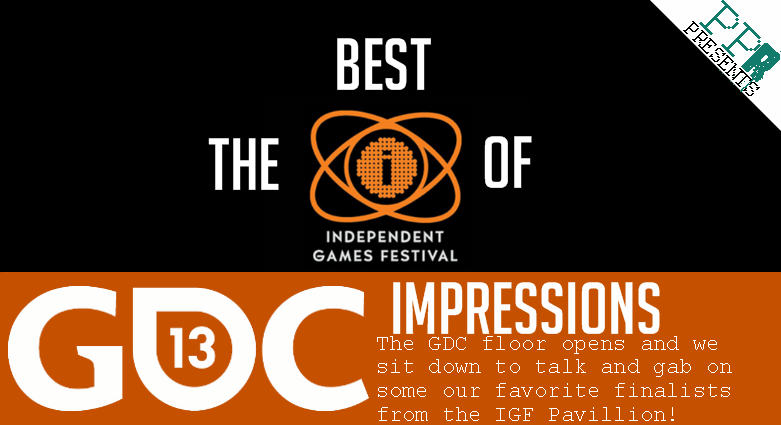
 he GDC floor expo has kicked off into full effect, and one of the highlights of this intimidating platform is the pavilion booth showcasing all of the finalists nominated for the annual Independent Games Festival awards. Sean and I had the pleasure of roaming through the aisles of all these favorable titles, and we highlighted some of our favorites. While some debuted to the public during our attendance to the show, others are still awaiting completion to go gold. Thanks to the partnership with Valve this year, each game will be available on Steam.
he GDC floor expo has kicked off into full effect, and one of the highlights of this intimidating platform is the pavilion booth showcasing all of the finalists nominated for the annual Independent Games Festival awards. Sean and I had the pleasure of roaming through the aisles of all these favorable titles, and we highlighted some of our favorites. While some debuted to the public during our attendance to the show, others are still awaiting completion to go gold. Thanks to the partnership with Valve this year, each game will be available on Steam.
Here are our picks to look out for.
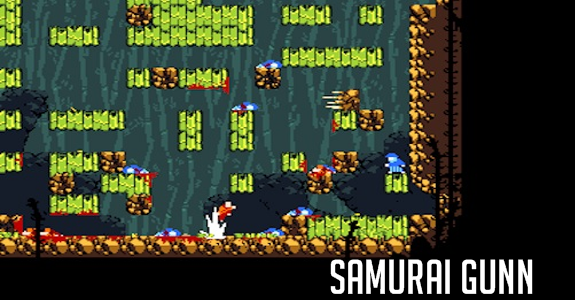
 -So what happens when game developers get bored while watching Tommy Wiseau’s “The Room” for the umpteenth time? Apparently, they create awesome games involving slow-motion samurai warrior deaths and guns.
-So what happens when game developers get bored while watching Tommy Wiseau’s “The Room” for the umpteenth time? Apparently, they create awesome games involving slow-motion samurai warrior deaths and guns.
Also highlighted as the next Rumpus Royale game at this year’s GDC, Samurai Gunn pins four players against one another in an all-out pixelated blood bath for supremacy. Once started, you’ll pick a samurai representing one of four factions, select a level, and fight to the death until sessions end and one player reigns supreme. You’ll jump on walls, slice up enemies, and even incinerate the opposition with fiery bullets.
In one instance I annihilated each other player at once as they jumped to the bottom of the level in an effort to challenge me. In a way it made me feel like the giddy teen I was when obtaining my first “Killing Spree” in Unreal Tournament. It was simply amazing.
As for development, Creator Beau Blyth described how he likes relying less on additions and more on the reliance of general mechanics. For instance, Shadow of the Colossus had little to work with, but the game expanded on everything they had based on available resources. Over time, Blyth hopes to edit swords in an effort to make Samurai Gunn as satisfying as possible.
Samurai Gunn will primarily be available on Steam, but Blythe also mentioned some tune-ups with a friend in order to make it a multi-platform sword-and-gun fight fest.
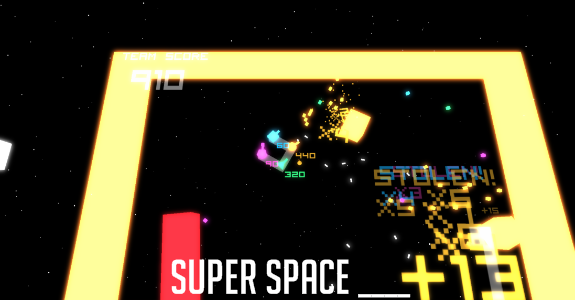
 -Dedicated couch-play has seen little to no focus within the current generation of games; Alexander Baard and David Scamehorn took it upon themselves to develop one particular title that would emulate a local, and social tension reminiscent of titles like Bomberman and Mario Kart—with the a self-aware title to boot, called Super Space ____.
-Dedicated couch-play has seen little to no focus within the current generation of games; Alexander Baard and David Scamehorn took it upon themselves to develop one particular title that would emulate a local, and social tension reminiscent of titles like Bomberman and Mario Kart—with the a self-aware title to boot, called Super Space ____.
This strictly multiplayer venture has you piloting one of three or four thrusters that also act as your turret. Shots fired from these turret thrusters affect the trajectory and propulsion of the ship’s movement, all while also being used to shoot against asteroids and other elements. The title is a splendid juxtaposition of cooperative and competitive play as you rely on each other to maneuver within controlled bounds that will end the game if crossed, and madly scramble to intercept and shoot down all of the asteroids and targets around you before your fellow players. The result ends up being this frenetic exercise of explosive color and shots as you race to see how many points you obtain while staying in the game. There’s no set date at this time for the release of Super Space ____, but we highly recommend that you keep an eye out for this multiplayer romp.
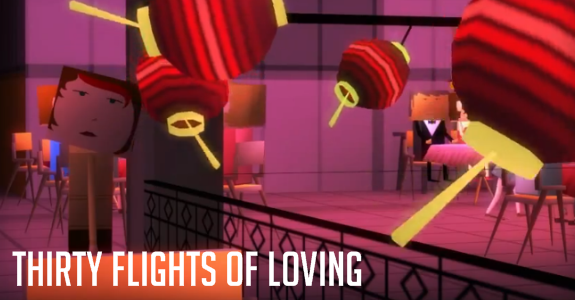
 -At first I was like, “the hell?” Five minutes later, I was a believer. This game sent me between hell and back, but not before teleporting me to random other scenes within the story.
-At first I was like, “the hell?” Five minutes later, I was a believer. This game sent me between hell and back, but not before teleporting me to random other scenes within the story.
Another addition from the ever eccentric Blendo Games and follow-up to Gravity Bone, the first-person narrative experience in Thirty Flights of Loving flashes players back and forth between scenes with two characters they commonly interact with. One moment, you’re in an airport. The next,  some balcony with too many stairs and not enough cats. You’ll basically enter knowing nothing at all and walking out thinking you actually “get” something bigger than yourself.
some balcony with too many stairs and not enough cats. You’ll basically enter knowing nothing at all and walking out thinking you actually “get” something bigger than yourself.
So as a whole, Thirty Flights of Loving focuses on games telling stories in worlds with environmental clues. As creator Brendon Chung puts it, sometimes we just want to poke around the world and observe how objects connect to the overall context of our experience.
“This game’s made for people who enjoy narratives and enjoy looking at every little clue in the world,” Chung said when describing the overall premise.
For instance, remember the random baby picture in Gordon Freeman’s locker from the original Half-Life? Seriously, what gives? We don't really hear about any kids in his life. Still, it makes players curious.
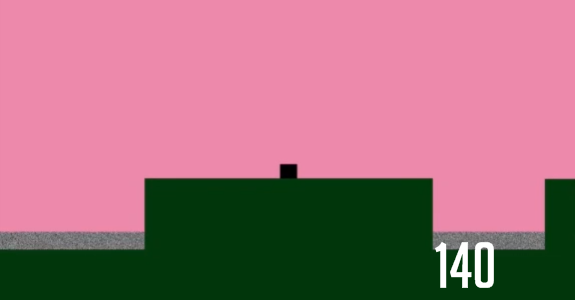
 -The act of finding meaning in something is a subconscious exercise that we apply in nearly every activity we partake in, but for some experiences, trying to apply reason will do little more than confound the experience altogether.
-The act of finding meaning in something is a subconscious exercise that we apply in nearly every activity we partake in, but for some experiences, trying to apply reason will do little more than confound the experience altogether.
The game 140, designed by Jeppe Carlsen, takes every minimal approach it can in design, and aspires to feed your sensory through instinctual movement by utilizing rhythm that’s conveyed both visually and audibly. The intentionally plain color palettes come alive as you maneuver a small pixel through a gauntlet of constantly shifting platforms that move throughout an open stage that's completely influenced by the chip-tune jungle-soaked beats of the game's soundtrack. The platforming mechanics are intuitive within your first few attempts, and become another reflexive action that feels basic and yet addicting dynamics that's stripped down of anything else other than the objective of moving and feeling the game. The animation and soundtrack particularly stand out among contemporaries, and with the renaissance of meticulously focused minimal design in the vein of titles like Super Hexagon and Electronic Super Joy, 140 places a foothold in the trend and is one worth checking out.
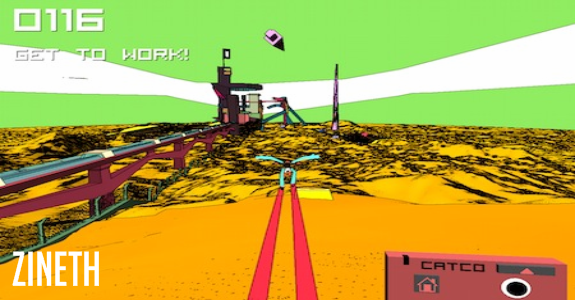
 -Wild, colorful polygons filled the screen in Zineth, an arcade styled skating-and-gliding game requiring great attention to detail. The fast-paced mechanics and flashy graphics alone were enough to initially catch my eye. I had to try this out.
-Wild, colorful polygons filled the screen in Zineth, an arcade styled skating-and-gliding game requiring great attention to detail. The fast-paced mechanics and flashy graphics alone were enough to initially catch my eye. I had to try this out.
Upon first glance, Zineth appears to be rather simplistic, but don’t be fooled -- it requires deeper amounts of concentration when adjusting to the controls and making sure you perform tricks, jumps, and glides correctly. As you move the character across colorful zones, you’ll notice pink trails where they previously traveled from. You’ll perform more jumps and more fast-paced maneuvers as you continue, which require you to take advantage of two highly important mechanics: rewind and fast-forward.
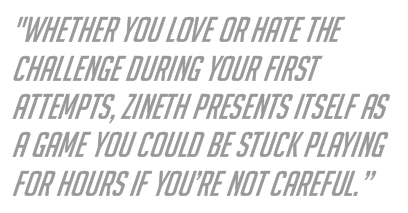 If you screw up (and you probably will), you have the option of rewinding to a previous stage and experimenting with what went wrong. In many cases, my jumps were poorly timed, so I had to return and investigate. Sure, maybe I slipped again four or fives times. but the gratification through improving my experience with the game was well worth the trial-and-error experiences.
If you screw up (and you probably will), you have the option of rewinding to a previous stage and experimenting with what went wrong. In many cases, my jumps were poorly timed, so I had to return and investigate. Sure, maybe I slipped again four or fives times. but the gratification through improving my experience with the game was well worth the trial-and-error experiences.
Near the end of the first zone, I explored what seemed like a virtual playground (or skatepark, rather) to explore, jump, grind, and rewind all I wanted. And really, that’s how the overall game felt.
Beautiful art with sharp cell shading effects truly made the experience stand out. Whether you love or hate the challenge during your first attempts, Zineth presents itself as a game you could be stuck playing for hours if you’re not careful. Because, hey -- you need to make that damn jump.
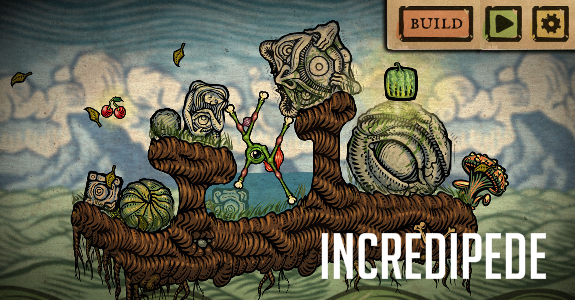
 -One would assume with us still so fresh into the year 2013, that we have come to see a myriad of aesthetics and visual designs within video games to date. Northway’s Incredipede stands as a shining example against this gross misconception. Within seconds, the wood block design injects an immaculate composition of colors and line work showcasing influences of European art deco that comes alive on the screen.
-One would assume with us still so fresh into the year 2013, that we have come to see a myriad of aesthetics and visual designs within video games to date. Northway’s Incredipede stands as a shining example against this gross misconception. Within seconds, the wood block design injects an immaculate composition of colors and line work showcasing influences of European art deco that comes alive on the screen.
As the stage sets in, you take control of a green ocular creature, which floats in the air at the mercy of the player, who can click the green goon so it grows and stretches out with an unlimited amount of limbs and additional appendages. Stretching out these limbs and positioning them in the correct position will determine the success for the Incredipede as he stumbles and tumbles through a series of obstacles in order to reach the goal point -- if you can even get the little guy going.
The puzzle adventure game possesses the innate qualities of Kerbal Space Program and QWOP all into one experience as you increase your success by inflating certain muscles within the collection of limbs you sprout from the creature, which represent strengths for propulsion in a specific direction for that individual limb. The results, once you get moving, are hilarious in motion, and a joy to watch whether you’re successful in your efforts or not. The series of stages will feature additional elements like fierce wind and environmental hazards that will constantly have you re-tweaking your incredipede, and it becomes an exercise of addiction rather quickly.
Incredipede released last week, and we’ll have a full review once we return from GDC. It has definitely caught our attention so far!

 -For those who don’t know of Nellie Bly, she was a journalist who opened many doors in the investigative aspect of the field. Requesting to be sent into an asylum, she examined all the unsuitable and inhumane practices taking place from within. After her editor bailed her out, she shared her story with the world.
-For those who don’t know of Nellie Bly, she was a journalist who opened many doors in the investigative aspect of the field. Requesting to be sent into an asylum, she examined all the unsuitable and inhumane practices taking place from within. After her editor bailed her out, she shared her story with the world.
Blackwell’s Asylum serves as an interactive emotional experience loosely based on Bly’s actual encounters.
A student production created by a crew of 18, The game takes place in a dark, dreary asylum where the player must assist a patient in negating capture. You’ll evade creepy Vincent Price like ward attendants based on sounds and sights around you, and all in an effort to avoid the inevitable sedation and who-knows-what afterwards.
The rather impressive AI mechanics in this game constantly keep players alert. When you open a door, it’s suspicious. When a light’s turned on, it’s fishy. Everything you do much be kept in careful consideration while navigating and attempting your escape.
One would be quick to reference this game with Amnesia. But upon further inspection, Blackwell’s Asylum presents a completely different experience that focuses less on “run from this thing you saw that’ll probably jump out and kill you” and more on the overall factor of creepiness. According to game director Claudia Stræde and designer Giuseppe Enrico Franchi, Blackwell’s Asylum focuses more on the fear factors involved with unseen enemies instead of mechanics such as spooking players with immediately frightening monsters. After all, once you’ve seen the creature, that’s it. You know what it is and you basically know what to expect.
In Stræde’s opinion, players experience a deeper connection with the environment by constantly experiencing the unknown. And in this case, she’s absolutely right.
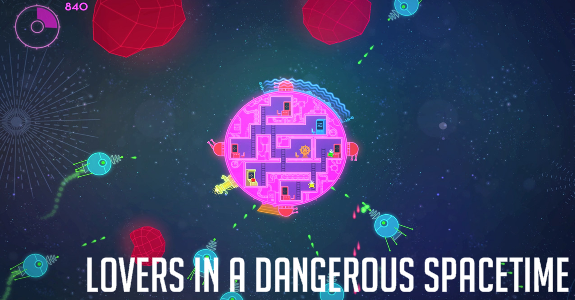
 -Cooperative play is being implemented in a variety of ways, and the possibilities are still expansive after all of these years. However, there’s a significant difference between playing with another player and WORKING with another player that yields its own set of rewards from the chemistry of your success. Lovers in a Dangerous Spacetime from Asteroid Base completely encapsulates this idea of a deep partnership.
-Cooperative play is being implemented in a variety of ways, and the possibilities are still expansive after all of these years. However, there’s a significant difference between playing with another player and WORKING with another player that yields its own set of rewards from the chemistry of your success. Lovers in a Dangerous Spacetime from Asteroid Base completely encapsulates this idea of a deep partnership.
The game has you working within the innards of a spherical ship with variety of different responsibilities that serve multiple functions in order to survive space danger. To be successful, you and your partner will need to coordinate the different functions across the ship as you’re approached from enemies on all sides that engage you in combat. The size and aggression of the mobs constantly changes, and will have you scramble about the ship as you task each other with best response or strategy to combat enemies. You'll use turrets, a rotating shield that guards a small section of your ship, or blow-everything-to-the-depths-of-hell beam that recharges over time after every use. And then there’s driving the ship, which provides it’s set of hilarity. The game possesses a depth of replay value with endless stage design that tests how many planets you can liberate or enemies you can destroy before you meet your own doom. Be sure to keep an eye out for it when it releases soon.
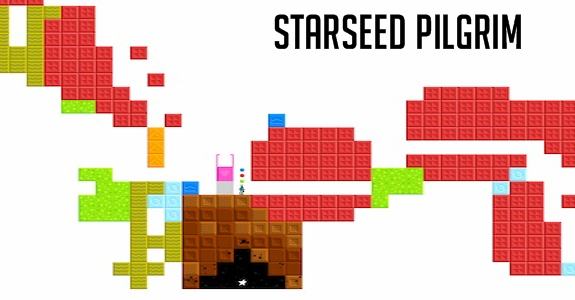
 An infinite and colorful journey where the player has no enemy outside of themselves, Starseed Pilgrim leaves so much to the imagination with what little you start with on-screen. As creator Droquen describes, the game has players “tending a symphonic garden.”
An infinite and colorful journey where the player has no enemy outside of themselves, Starseed Pilgrim leaves so much to the imagination with what little you start with on-screen. As creator Droquen describes, the game has players “tending a symphonic garden.”
What started as a simplistic plane of brown cubes evolved into a colorful field of blocks growing throughout the map. I played around with various combinations and locations as I dug around and maneuvered myself from block to block. I also raced against the clock as an expanding field of dark matter worked to overwhelm my progress and lower my available options. The more I progressed, the more chances I had of prolonging my session. I wanted to continue. I wanted to grow. And really, aside from the above descriptions, I couldn’t specifically tell you why. It just felt good.
Meanwhile, blocks triggered musical sound effects as chains and chains sprouted throughout the grounds I planted colorful seeds in. The game was like an explorational symphony of fun, and I was the conductor. I couldn't help but be hooked in a way as reds, blues, oranges, and greens filled blocky spaces around the white map.
If you’ve ever enjoyed a game where you sat down, played for hours, and couldn’t stop describing why you loved it so much, Starseed Pilgrim is for you.
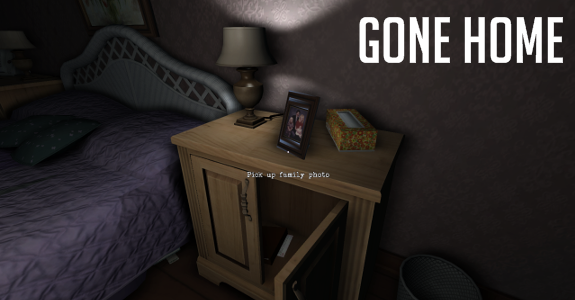
 In game development, there has always been a daunting goal -- a goal to emulate a connection that organically transports a player into an existential experience within itself. While the promise of such title is one of many movements to expand video games and how we
In game development, there has always been a daunting goal -- a goal to emulate a connection that organically transports a player into an existential experience within itself. While the promise of such title is one of many movements to expand video games and how we  play them, this specific choice of gameplay design has rarely been achieved well in the past; The Fullbright Company’s Gone Home, however, seems to be on the right track.
play them, this specific choice of gameplay design has rarely been achieved well in the past; The Fullbright Company’s Gone Home, however, seems to be on the right track.
 GDC 2013,
GDC 2013,  IGF Awards,
IGF Awards,  IGF Finalists,
IGF Finalists,  Indie Games | in
Indie Games | in  Features
Features 









